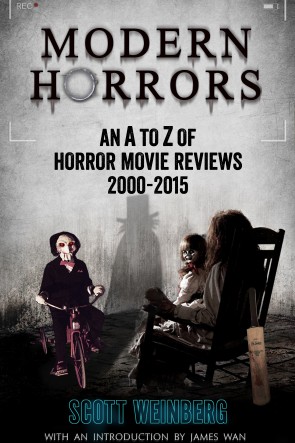Review: FINAL GIRL (2015){0}
It was Carol J. Clover who first coined the term ‘final girl’ in her influential book Men, Women and Chainsaws: Gender in the Modern Horror Film (1992).
The phrase is used to refer to the young woman who, through resourcefulness and moral purity, alone emerges triumphant – or at least alive – from someone else’s killing spree. So the title alone of Tyler Shields’ directorial debut Final Girl flags to the viewer a certain self-consciousness with regard to slasher tropes, and perhaps raises expectations of some knowing subversion.
We first meet the ‘final girl’ of the title, Veronica, in the opening scene, where, at age six, she really is still very much a girl, and, having recently been orphaned, quite literally the last in her line. She is interviewed and in effect recruited by a mysterious adult (Wes Bentley) who has similarly lost loved ones recently – and we jump to 12 years later, where Veronica (Abigail Breslin) has spent her entire adolescence being (creepily, if chastely) groomed as the perfect final girl – think Kick-Ass‘s Hit Girl, or Nikita, or Hanna. After a few last practical trials involving honeytrapped strangers and heavy hallucinogens, Veronica is unleashed on a quartet of affluent, preppy males (Alexander Ludwig, Logan Huffman, Cameron Bright, Reece Thomspson) who get their kicks from ‘hunting’ women – just like Veronica – in the woods. Only this time, that old cliché (and mainstay of the slasher movies) about the hunted becoming the hunter is set to be perversely realised. For their quarry is more than ready, and these smug alpha predators do not quite know what is about to hit them.
Though the setting of Final Girl is apparently contemporary, the men’s tuxedoes, the women’s hairstyles, the classic cars, the rockabilly score, even the malt bar where the foursome pick up their prey, all come with a decidedly Fifties feel. As well as bringing an agreeable stylisation to the proceeedings, and pointing to a long, deep-rooted history of misogyny, this retro vibe dresses everything in the colours of psychedelic fantasy, causing us to question the reality of what we are seeing, and to wonder what, beneath all these highly mannered scenarios, is truly going down.
Certainly there is a gendered pleasure to the way that Veronica turns the tables on decades of exploitation and cruelty against women, converting casual victimhood into empowered aggression and calculated cunning. Ostensibly the novel premise here is that the heroine is a final girl by design rather than by accident – and once the film has, very early on in the proceedings, introduced this high concept, it sees it through to a seemingly predictable, and therefore not altogether satisfying, end. Yet Veronica’s coming out is also the (equal-opportunities) emergence of a new serial killer (with a backstory too trippy and irrational to be entirely reliable). For though concerned with males who may be slaughter-happy sociopaths, Final Girl is also focused on the delusional psychosis, whether genetic or environmental, of Veronica herself, as she takes out her perceived antagonists one by one in a drug-fuelled frenzy. In the end she is not just the final girl, but also a machine-like slasher – and working back through events in your own mind might just yield a rather different storyline from the one that has played out so vividly on the screen.
Buried somewhere between these dual narratives is a discourse on men and women (and feminism and ‘meninism’), where victimhood is up for grabs and easily distorted in its presentation – and that is the kind of confronting, uncomfortable conversation about gender that horror does best.
★★★★








